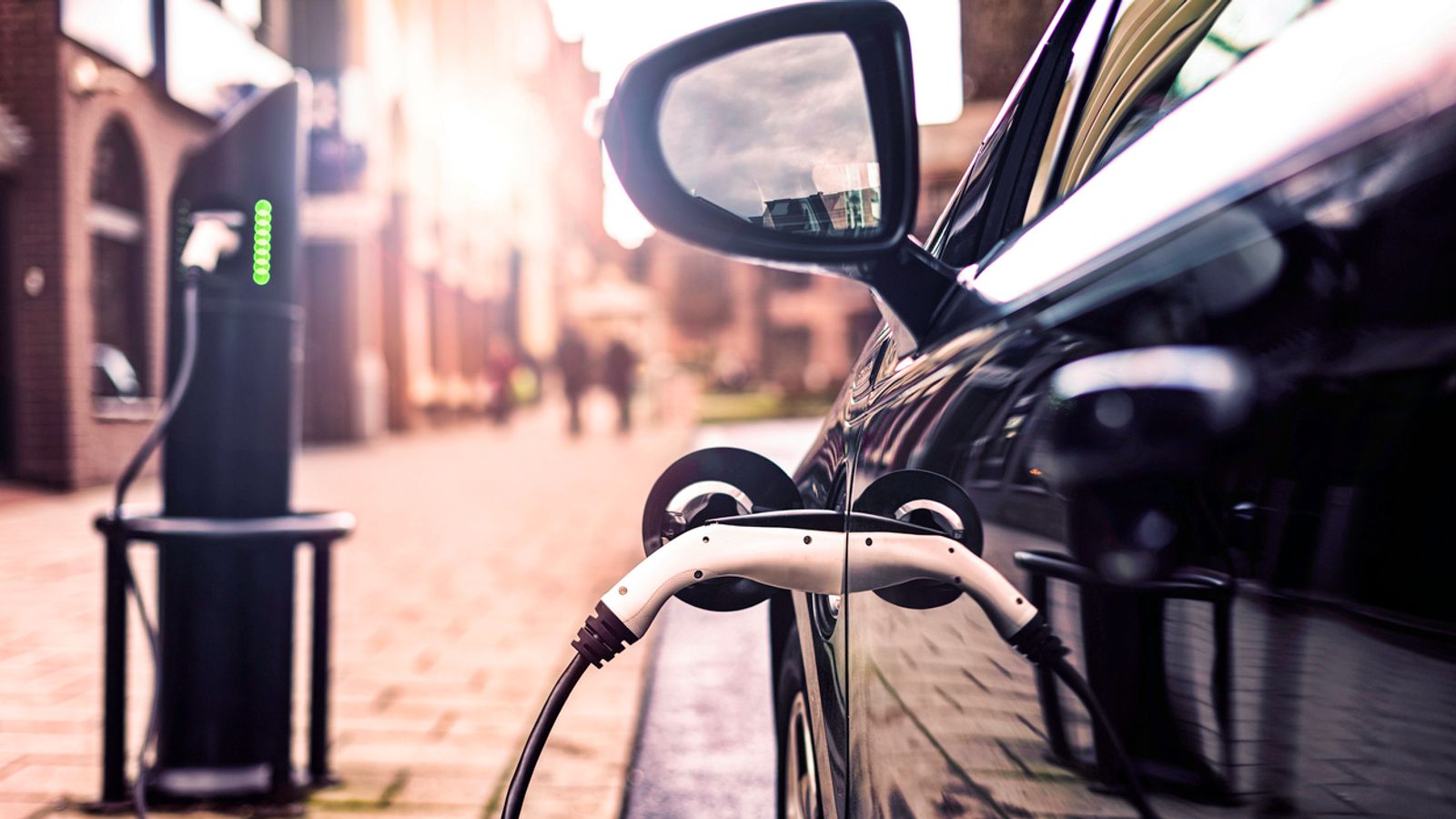By Karina Hershberg, PE
For most of human history, work and activity has been shaped by the sun. During the day, humans could farm, socialize, and build. At sunset, activity had to slow down, and shelter found. Energy was only used when energy was available, during daylight hours. We were leading Net Zero Carbon lives before it was cool.
By first harnessing biofuels and then fossil fuels, life got to expand beyond the confines of sunrise and sunset. Fossil fuels were an amazing portable form of super dense energy that transformed humanity’s path through history and paved the way to our modern lifestyle. Unfortunately, these fuels also have led us to the abyss of the climate crisis in which we currently find ourselves. The question now is whether we can reconcile the negative aspects of our relationship with energy while preserving the positive.
Enter the concept of grid-interactive flexible loads. It doesn’t roll off the tongue quite as easy as “solar” or “wind,” which is perhaps why it hasn’t received the same amount of attention in discussions of sustainability. Yet, a closer look at the plans for energy decarbonization shows flexible loads are just as important to the success of this planet-saving solution as its more famous renewable energy cousins.
The concept of flexible load is called by many names — demand response, peak shaving, grid-interactive efficient buildings, distributed energy resources, and the list goes on. But despite a cornucopia of buzzwords, these terms all describe the same vision of utilizing buildings and their systems to help grids.
Net Zero … What?
Grid-interactivity and flexible loads are in response to the limitations of onsite solar generation and even the aspirations of net zero energy. Net zero energy has been an important goal for the building sector to target, but it technically is not the same as truly being in sync with available energy resources. In many ways, it is a math problem you do at the end of the year to reconcile your annual usage with your annual generation, whereas total decarbonization means your load is served by renewable sources every minute of every hour of every day. So, while net zero energy is a critical step in the right direction, 24/7 emissions-free energy is ultimately where we need to land. If done correctly, it will be a return to a zero-carbon lifestyle, one aligned with the energy flows of nature, while still supporting the advances of modern society.
DIY Grid-Interactivity
One of the key solutions for returning to a system in balance with renewable resources is to reimagine buildings and homes as dynamic partners in these larger utility systems instead of simply passive users of the energy services. This more dynamic relationship is where grid-interactive, flexible loads come back into the picture.
Demand response programs come in all shapes and sizes, but to an average homeowner such as myself, they can look as simple as a text message like the one I received on June 22, 2020. It was the inaugural residential “Peak Time Rebate Event” for my utility, Portland General Electrical (PGE). My text message invited me to reduce my household electricity use the following day from 5pm–8pm. In exchange, I would receive an incentive based on my decreased usage.
As an electrical engineer at PAE with a passion and expertise for sustainability design and the future of energy, I was excited to participate in this program for the first time. Finally, a chance to make my home my own research project! Living in an older house without air-conditioning, my family was already in the habit of passive cooling techniques for the hot summer days- shades on the windows, avoid opening doors during the hottest parts of the day, and generally try not to add heat to the house. When the time came, 5 PM on June 23, we went around the house trimming our electric loads. It was as straightforward as shutting off lights, avoiding appliance cycles like laundry and dishes, and making simple no-cook egg salad sandwiches for dinner, which the kids reported was the best dinner they had ever had. My children’s questionable culinary preferences aside, it was a nice evening with relatively little impact to our typical routine.
The next day when my phone pinged with a text from PGE, I was excited to see the results of my efforts, but that excitement turned to confusion when I opened the message. I had saved just $.75 — reducing energy consumption from my typical 2.02 kWh to an unremarkable 1.27 kWh. I was deflated. In the coming days, I compared notes with fellow energy geek colleagues and discovered we all had a similar experience — little measurable individual impact from our supposedly critical behavior change. What was going on?
Power of the Collective
It turned out the key to our seeming failure was the scale of our view. When observed through the lens of an individual, the impact to behavior and usage was minimal. But as a collective, the story suddenly changed. After talking with experts at PGE, I learned that the voluntary collective reduction of households in PGE service areas reduced energy demand by 11 MW per event hour compared to expected demands. It put us right on the cusp of eliminating the need for a peak-time natural gas engine, one of the highest emission sources for electricity generation. This impressive system-level impact was created by a humble group of early program adopters with an average savings of just 0.12 kWh per participating household.
This is, in fact, exactly what load flexibility is trying to achieve. Collective actions made up of small individual changes are a key element of grid decarbonization and translate into system-wide emissions savings. In the most extreme cases, these small collective actions can potentially even avoid the more catastrophic situation of grid outages as recently seen around the country. The reason is that to support higher than usual energy demands, typically because of an extreme weather event, utilities have to activate their most carbon-intensive quick-response plants, so-called “peaker plants.” By strategically organizing collective action to reduce demands on the grid during these peak times, we are collectively able to have a greater emissions sum impact than might appear from its energy parts.
Image: An emissions heat map of the northern California electric grid. Decreasing electricity usage during peak emissions time with load flexibility techniques has an increased benefit in terms of emissions reductions than the same usage decrease during low emissions times.
Image by PAE using data from WattTime
“AND” Not “OR”
This brings us to what is perhaps my favorite aspect of load flexibility. When discussing sustainability, we often run into conversations about responsibility and blame. We compare and contrast the agency individuals have in their daily lives with corporations and industries who closely influence consumer options. Within the community of people who recognize the need for decarbonization and care passionately about the broad adoption of sustainable practices, even we can fall into the trap of asking the wrong question: “Should the burden be on individuals to change their habits?,” OR “Should corporations and industries be held responsible for systemic change?” In asking the question in this way we are using the wrong conjunction (and perspective for a solution). In reality, individuals need to make conscious efforts to change AND corporations and industries need to change. Demand response programs are an intriguing example of these paired truths. Changes by the individual directly support changes in the system, and vice versa.
Decarbonization of the electricity sector is one of the most critical system changes needed to reach U.S. climate targets and participation in local demand response programs is one of the more powerful tools we have as individuals to support that transition. Conveniently, it is also one of the easiest. Program registration is usually through your local utility with no cost and perhaps even a small incentive. My local utility, PGE, has several incentives from peak rebate times to smart thermostat programs. Although equipment like smart thermostats and home batteries can make participation easier and increase the benefits, low tech options like light switches and no cook meals work just fine, too.
A New Energy Relationship
After a full year of participating in the PGE residential demand response program, my family has dialed in our electrical load reduction strategies. Perhaps more importantly, it has changed my mindset about how and when my home is using energy. As a certified energy geek, I’ve spent more hours than I can count poring over utility emissions profiles and pondering how buildings can more wisely tap into the flow of electrons. By better understanding where and how our electricity comes from, we can better design our buildings and optimize our usage patterns. Embracing the perspective that the solutions are an “and,” and not an “or,” will also allow us to reach an optimized grid-interactive state. But whether you chose the automated solutions or a more manual approach to embark on this path, take it from my kids – make sure to include egg salad sandwiches.
Join me for a webinar with Electrify Now and Portland Sustainable Building Week on grid interactivity on October 13.
Karina Hershberg is passionate about sustainable development and has 15 years of experience in electrical engineering. She brings a unique perspective to her dual roles in analysis and engineering at PAE. Through data-driven analytics and innovative electrical design, Karina helps projects implement regenerative and resilient solutions. She leads the development of microgrid design, emissions analysis, and campus-scale solutions for the firm.
Appreciate CleanTechnica’s originality? Consider becoming a CleanTechnica Member, Supporter, Technician, or Ambassador — or a patron on Patreon.


